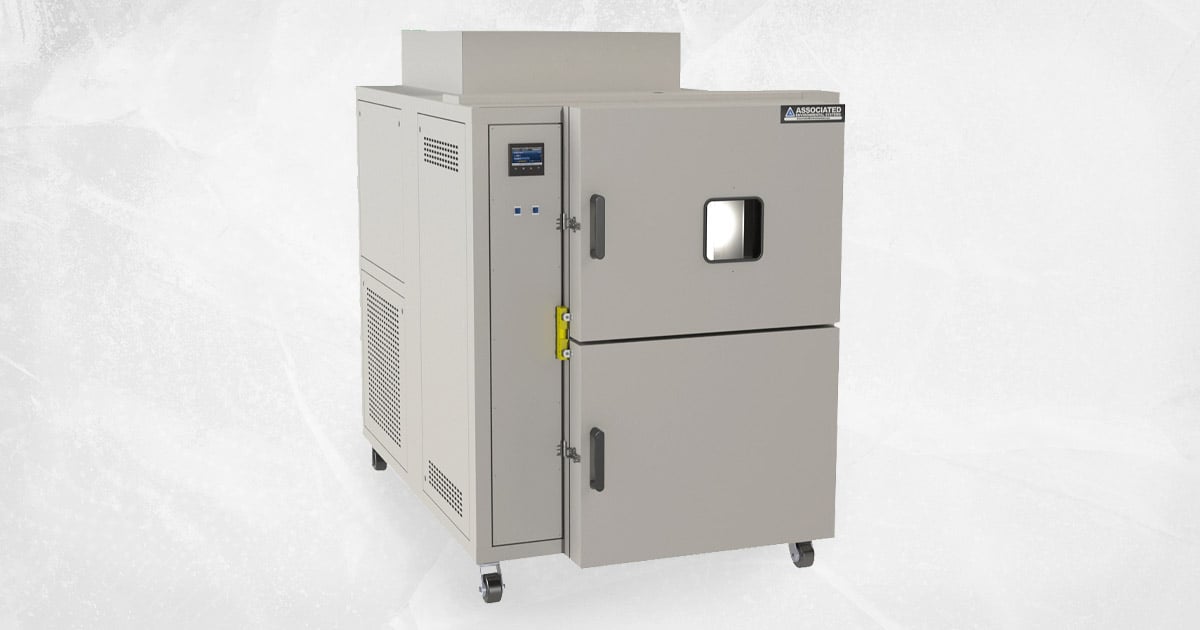Buying a Thermal Shock Test Chamber: Quick Tips to Find the Best Model for You

Companies across industries must keep consumers safe. A large portion of accomplishing that is through rigorous testing. By confirming their products operate as intended in various environmental conditions, they can confidently set expectations for use, provide safety instructions, and protect their brand.
In certain industries (such as automotive, defense, medical, and consumer), thermal shock testing is one of the preferred methods for determining the effectiveness, reliability, and quality of electronic, electromechanical, plastic, and mechanical products and components.
Thermal shock testing involves rapidly shifting a device under test (DUT) between two extremes—hence the ‘shock.’ Consider an automotive manufacturer. They need to prepare their vehicles for consumers in desert climates as well as those in northern locations. The cars and trucks need to run properly in extreme heat and cold. Then there’s aviation. Planes experience temperature fluctuations as they rise to and descend from high altitudes. Their ability to withstand these shifts is a matter of life and death for the passengers.
Common standards that require thermal shock testing include MIL-STD 883K Method 1010.9, MIL-STD 202H Method 107, MIL-STD-202G, and MIL-STD-883G. To reach these standards, you’ll need a chamber designed specifically for thermal shock testing.
Here are three quick tips for finding a thermal shock chamber that’s right for you.
Value Experience
Industry standards don’t allow for much room for error. Every aspect of the test matters, from temperature settings to the time the DUT spends at each extreme and more. To that end, prioritize experience when comparing test chamber manufacturers: Has this company built and customized thermal shock chambers for years? If they have, they likely know the intricacies of the standards. They account for details to help deliver the results you require.
Experience isn’t just a number, though. It covers all that goes into successful testing. Experienced manufacturers may offer customizations you may not know you needed. They also can guide you through power requirements and the layout of your lab.
This holistic approach will help you optimize your testing to ensure effective results.
Look for Innovative Features
The standards you’re testing will determine the features you’ll need. That doesn’t necessarily change manufacturer to manufacturer.
Thermal shock chambers generally reach temperatures as high as 200ºC and as low as -70ºC (with boosting options available). These performance capabilities ensure you can create specified conditions and complete your testing efficiently.
What sets different manufacturers apart are features that fall outside performance. Depending on the products you’re testing and the conditions you’ll set, thermal shock testing is inherently dangerous for the DUT, but it can be done safely.
One such way is with automation. Rather than having you reach into chambers’ workspace and physically move the DUT from one zone to the other, some manufacturers have developed pneumatic baskets that travel between the zones within seconds.
Another feature to seek out is cascade control. Instead of just monitoring the air temperature in the two chambers, a sensor is put directly on the DUT to control the heaters and refrigeration system in conjunction with the air temperature readings. This ensures that the DUT reaches the specified temperature setpoint with minimal overshoot.
Also, some standards require DUTs to sit at room temperature between ‘shocks.’ Well, leading manufacturers add a third zone (to go with one hot, one cold) to chambers, set to ambient conditions.
Finally, look for remote test monitoring capabilities. AESONE CONNECT, for example, comes standard on the SM Series of chambers. It’s a combination of hardware and software that enables you to stay connected to your chamber, monitor ongoing tests, and view and store historical data wherever you have an internet connection. AESONE CONNECT is vital when testing using a thermal shock chamber. Testing can last for days, so having an automated shock chamber to move the DUT between environments is critical.
These innovations aren’t designed only for one-off testing. Rather, they lead to repeatable, safe testing for years on end.
Support Matters
Support during the purchasing process matters. You need a manufacturer that will walk you through options to ensure you end up with the right thermal shock chamber. However, it’s arguably more important to secure long-term support. After all, a well-maintained test chamber can run for 10 years or more.
Find a manufacturer that will continue to meet your needs long after the chamber arrives in your lab. They’ll perform repairs when necessary, send replacement parts, or just answer questions if you pick up the phone to call.
That sort of plan makes your investment of thousands of dollars produce a strong ROI. You can confidently test in the near and long term.
It’s the level of service and support you can expect from Associated Environmental Systems. AES’s SM Series features top-of-the-line thermal shock chambers with numerous performance and construction options. Contact us today to find the chamber that’s right for you.


